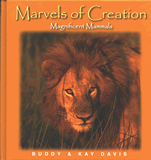Mammals
Hall of Life—Mammal Exhibits
on March 21, 2016From the tiny, gray mouse to the large, blue whale, mammals are found on every continent and in every ocean on earth. Scientists have discovered that this group of animals shares several common characteristics: a backbone, hair (or fur) covering the body, production of milk by the female to nourish her young, and three tiny bones in the middle ear. All mammals also have a four-chambered heart, a neocortex (the special area of the brain, which is involved in higher functions such as conscious thought, spatial reasoning, sensory perception, and language [in humans]), and specialized teeth.
Although the museums will tell you that the characteristics common to all mammals are a result of sharing a common ancestor, this is not true. This “design economy” points to a single common designer.
The 152 families within the mammalian class probably represent 150–160 original “kinds” of mammals. The ancestors of those mammal kinds that live in the sea (e.g., whales) and fly in the air (e.g., bats) were created on Day 5, while those that live on the land were created on Day 6.
Scientists have grouped mammals into three main categories: monotremes (e.g., platypuses, echidnas), marsupials (e.g., opossums, kangaroos, wombats), and placentals (e.g., humans, mice, horses).
Museum Guide
Are you exasperated by all the hype about "millions of years" in secular museums? The Museum Guide will help!
Browse Kids BookRecommended Resources
- © 2024 Answers in Genesis
- Privacy Policy
- Contact
- About



